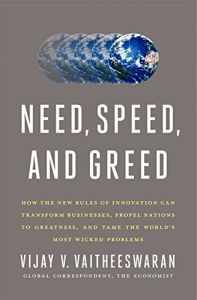Join getAbstract to access the summary!

Join getAbstract to access the summary!
Vijay V. Vaitheeswaran
Need, Speed, and Greed
How the New Rules of Innovation Can Transform Businesses, Propel Nations to Greatness, and Tame the World's Most Wicked Problems
HarperBusiness, 2012
What's inside?
What does innovation look like in a changing world?
Recommendation
Zoom co-author Vijay V. Vaitheeswaran blends the old and the new to produce something striking in his latest examination of innovation. Vaitheeswaran, The Economist’s China business editor, mixes familiar points – the world is globalizing, innovation is essential – with surprising insights – innovation has innate dangers. The book’s title refers to three key aspects of innovation: the need to innovate now, the speed of approaching singularity and the direction of innovation, and greed for what success looks like today, though the author actually warns against greediness. However, perhaps because portions of the text already appeared in The Economist as distinct articles, the various sections don’t always fully integrate. That caveat aside, every reader is sure to find something new and useful. getAbstract recommends this smart, interesting exegesis to innovators, those managing innovators and anyone who wants to prepare for a changing world.
Summary
About the Author
Vijay V. Vaitheeswaran also wrote Power to the People and co-wrote Zoom. He is the US Business Editor of The Economist.

















Comment on this summary